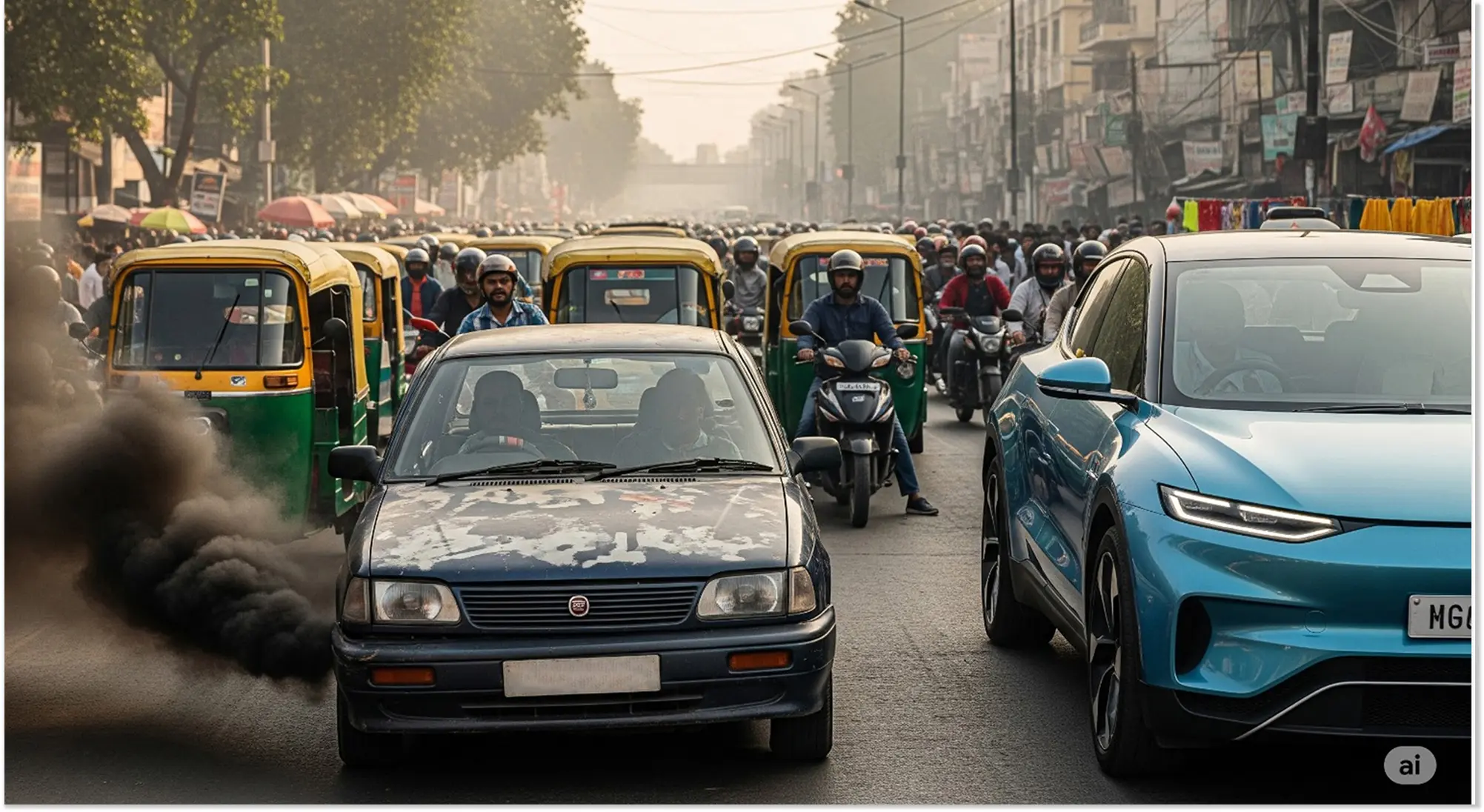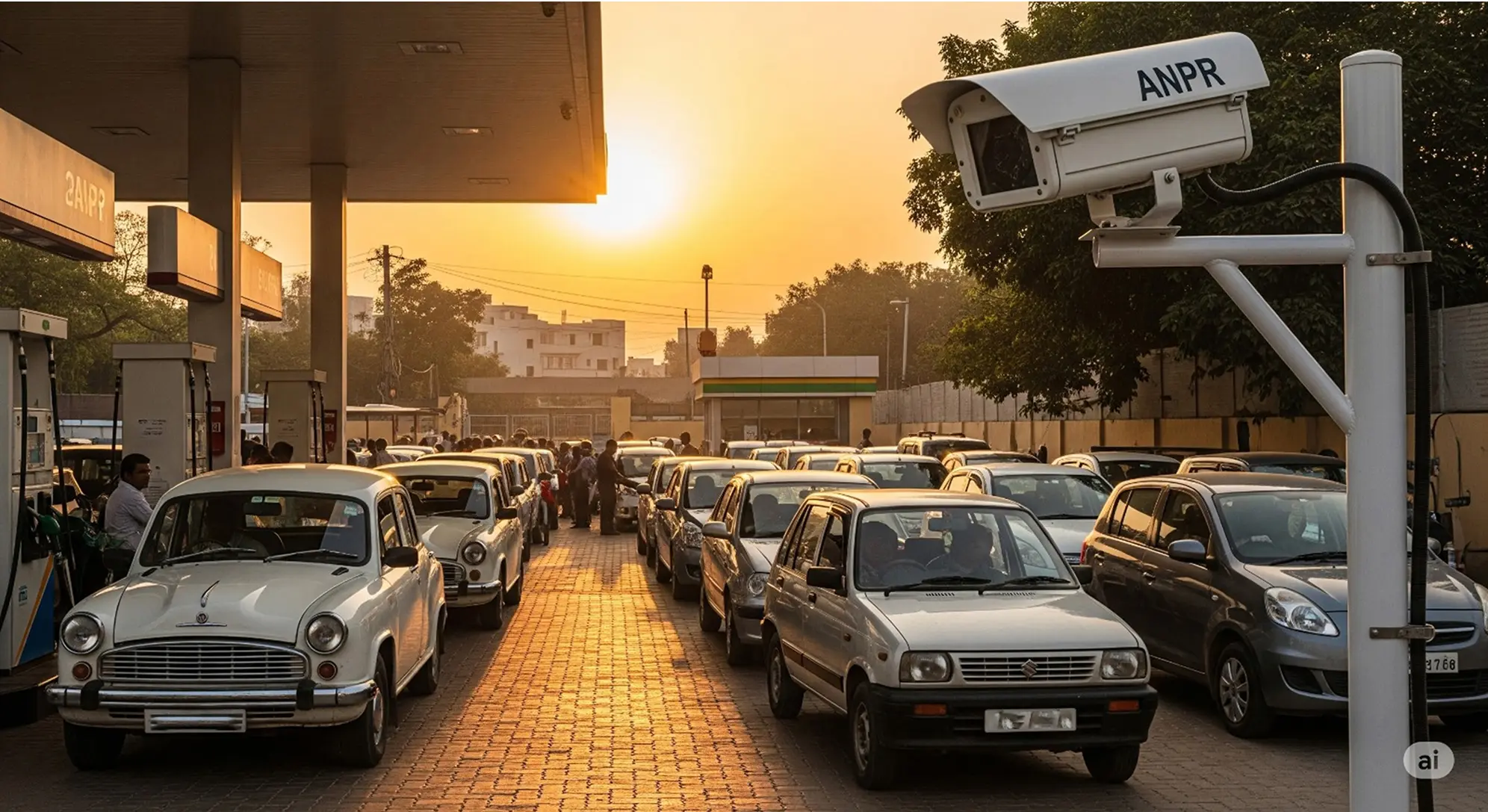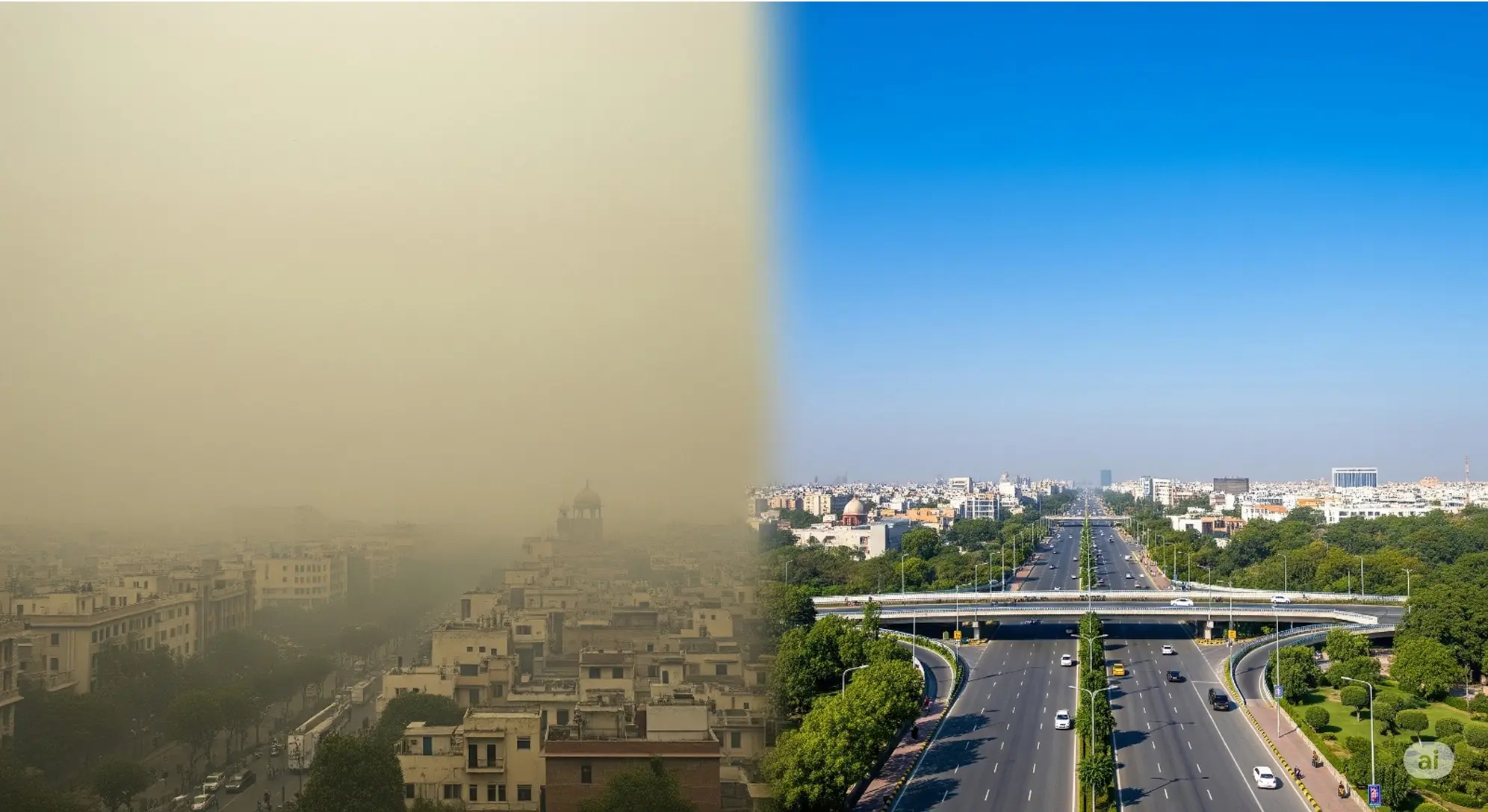Delhi’s air quality has been a growing concern for years. Every winter, the city transforms into a haze-filled landscape with pollution levels soaring to hazardous levels. One major contributor to this decline in air quality is vehicular emissions. In response, the Delhi government has enforced a ban on petrol vehicles older than 15 years and diesel vehicles older than 10 years. The idea is simple: remove the most polluting cars from the roads and improve air quality. But does this strategy actually work? As Banning Old Vehicles Really Improve Delhi’s Air Quality? Let’s break it down with facts, data, and science.
Why Focus on Old Vehicles?
Older vehicles tend to emit significantly more pollutants than newer ones. With wear and tear, the engine’s combustion efficiency drops, resulting in increased emissions of harmful gases like carbon monoxide (CO), nitrogen oxides (NOx), hydrocarbons, and particulate matter (PM2.5 and PM10).

According to a report by the International Council on Clean Transportation (ICCT):
- Diesel vehicles older than 10 years contribute approximately 65% of on-road NOx emissions.
- Vehicles older than 15 years, although only 6% of the registered fleet in Delhi, account for nearly 25% of total vehicular emissions.
A 2023 analysis by the Centre for Science and Environment (CSE) shows:
- BS6-compliant vehicles emit up to 90% less PM and 70% less NOx compared to pre-2000 cars.
- Two-stroke engines, prevalent in old two-wheelers, release nearly 10 times the pollutants of newer four-stroke engines.
What the Data Says About Delhi’s AQI? Banning Old Vehicles Really Improves Delhi’s Air Quality?
Delhi’s Air Quality Index (AQI) often ranges from “poor” to “severe,” particularly during winter. According to the Delhi Pollution Control Committee (DPCC), vehicular emissions contribute around 20-25% of the city’s total pollution load. This share can go up to 40% during high traffic hours in winter.
Data from SAFAR (System of Air Quality and Weather Forecasting and Research) and CPCB (Central Pollution Control Board) reveal:
- During the Odd-Even scheme in 2019, a temporary 10-13% reduction in PM2.5 and PM10 was observed.
- During Diwali in 2022, areas with strict enforcement of vehicle bans and movement saw AQI levels 15-20% lower than similar regions without restrictions.
In contrast, the lack of consistent enforcement often leads to rebound effects once restrictions are lifted.
Challenges in Enforcing the Vehicle Ban
Despite the policy, enforcement has been tricky:

- ANPR Camera Glitches: Automatic Number Plate Recognition (ANPR) systems, installed at petrol pumps to detect banned vehicles, have faced technical glitches. A recent audit by the Delhi Transport Department found that only 60% of ANPR installations were functioning optimally by mid-2024.
- Cross-Border Loopholes: Approximately 18% of vehicles detected with expired registrations in Delhi were found refuelling in neighbouring states like Haryana and Uttar Pradesh.
- Lack of Public Awareness: A 2023 survey by TERI (The Energy and Resources Institute) revealed that nearly 40% of vehicle owners in the NCR were unaware of the exact age limit and implications of the end-of-life vehicle policy.
- Inadequate Scrappage Infrastructure: Delhi currently has only three government-approved scrappage facilities, far from sufficient to handle the estimated 250,000+ vehicles reaching end-of-life status annually.
These points raise the question Can Banning Old Vehicles Really Improve Delhi’s Air Quality?
Is Age the Right Metric?
One of the emerging debates is whether a vehicle’s age should be the sole factor in determining its eligibility to operate. Are new vehicles blameless? Banning Old Vehicles Really Improve Delhi’s Air Quality
Pros of Age-Based Ban:
- Simple to implement and enforce.
- Easier for authorities to track via registration databases.
Cons:
- Some well-maintained older vehicles emit less than poorly maintained newer ones.
- Doesn’t account for technology retrofits or emission test results.
An alternative approach could involve pollution-based metrics, such as:
- Real-time emissions data using On-board Diagnostics (OBD).
- AI-powered smart PUC (Pollution Under Control) testing that flags inconsistent results.
Pilot programs in other cities have shown promise. For instance, in Pune, a 2023 test run using OBD sensors on 10,000 vehicles showed 92% accuracy in detecting high-emission vehicles, regardless of age.
Global Examples to Learn From
Several cities around the world have implemented similar policies:

- London: Introduced the Ultra Low Emission Zone (ULEZ) in 2019. As of 2021, NOx emissions within the ULEZ dropped by 44%, and PM2.5 dropped by 27%.
- Beijing: Phased out 2.5 million high-emission vehicles between 2013 and 2017. Result: PM2.5 concentration declined by 35%.
- Mexico City: Enforces a “Hoy No Circula” (No Drive Day) policy. Despite some initial setbacks, the policy, when combined with emission testing and subsidies, reduced PM10 levels by 15% over 5 years.
These examples show that bans, when combined with incentives and infrastructure upgrades, can bring substantial improvements.
Odd-Even Rule in Delhi: Did It Help?
To fight Delhi’s choking air pollution, similarly, the government launched the Odd-Even rule—a system where cars with odd-numbered plates ran on odd dates and even-numbered ones on even dates. The idea was simple: fewer cars, cleaner air.
And it did help—at least a little. During the first phase in January 2016, pollution levels (especially PM2.5) dropped by around 5–13% in some areas. Roads were less congested, and people talked more about pollution than ever before.
But the effect didn’t last. As soon as the scheme ended, pollution crept back. That’s because cars are only part of the problem—burning crops outside Delhi, industrial smoke, and weather patterns also play big roles.
Still, the Odd-Even plan showed that policy + public cooperation can spark change—even if it’s just the beginning.
The Way Forward for Delhi
To make this policy effective, Delhi needs to adopt a multi-layered approach:
- Upgrade ANPR Systems: Ensure full coverage across all petrol pumps and seamless integration with the vehicle registration database. Invest in AI to improve recognition accuracy.
- Stricter PUC (Pollution Under Control) Norms: Make PUC certificates more rigorous and digitized. Introduce automated roadside PUC testing vans.
- Encourage Electric Vehicles (EVs): Expand EV charging infrastructure from the current 4,000+ stations to at least 10,000 by 2026. Provide subsidies of up to INR 1.5 lakh for scrappage-to-EV conversion.
- Public Transport Investment: Increase the frequency and coverage of DTC buses and the Delhi Metro. According to a 2022 audit, 30% of daily commuters still rely on private vehicles due to poor last-mile connectivity.
- Citizen Awareness: Launch multilingual awareness campaigns to educate citizens on pollution impact and green mobility options.
Conclusion
So, can banning old vehicles improve Delhi’s air quality? It’s a step in the right direction, but not a silver bullet. While removing high-emission vehicles from the road will reduce some pollution, lasting improvement requires a comprehensive strategy that includes better enforcement, smarter metrics, public awareness, and a push for cleaner mobility solutions.
The data supports the policy’s intent, but real progress depends on closing the enforcement gaps and scaling up clean transport infrastructure. Delhi has taken the first step. Now, it needs to walk the entire journey towards breathable air and a sustainable future.